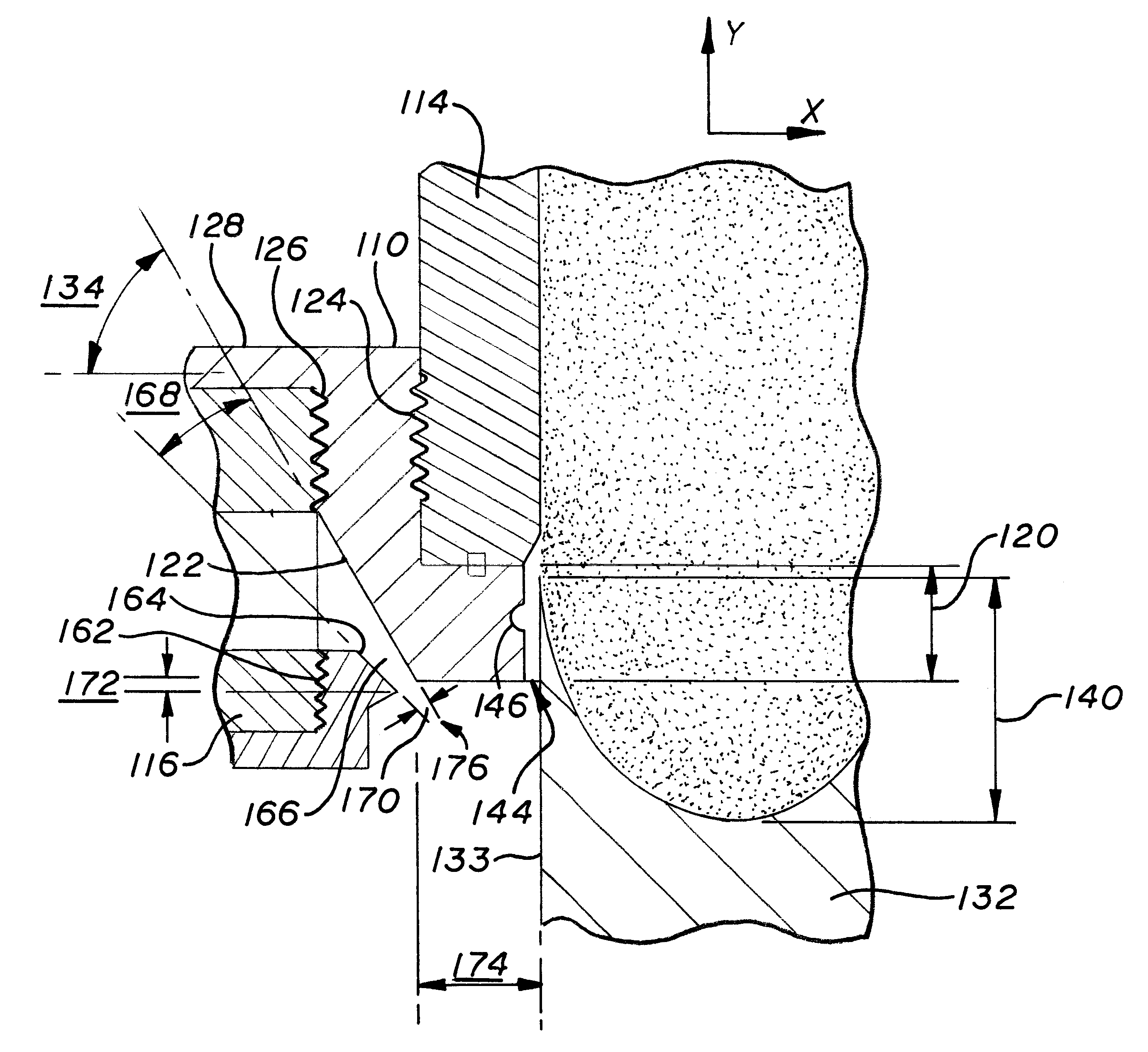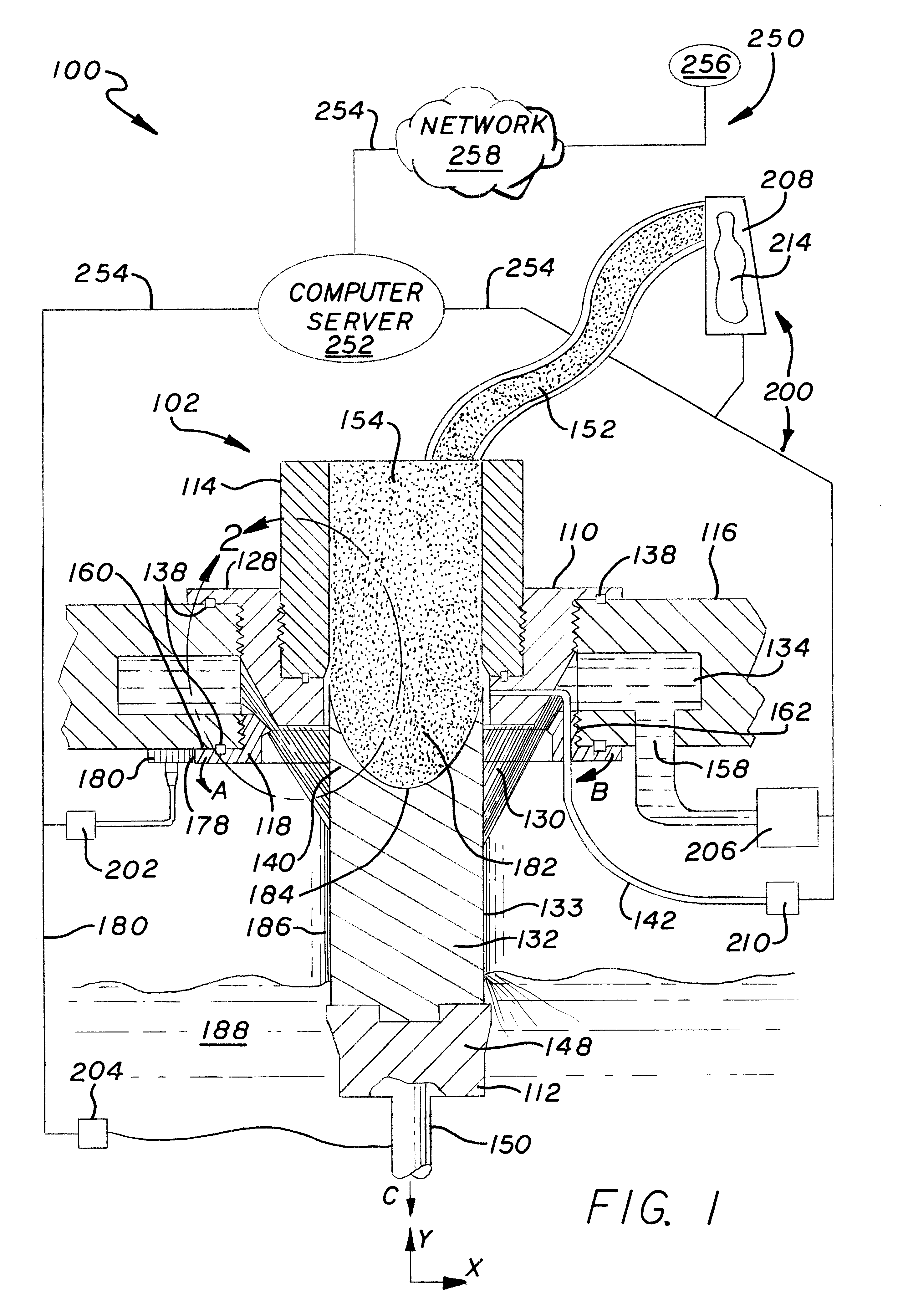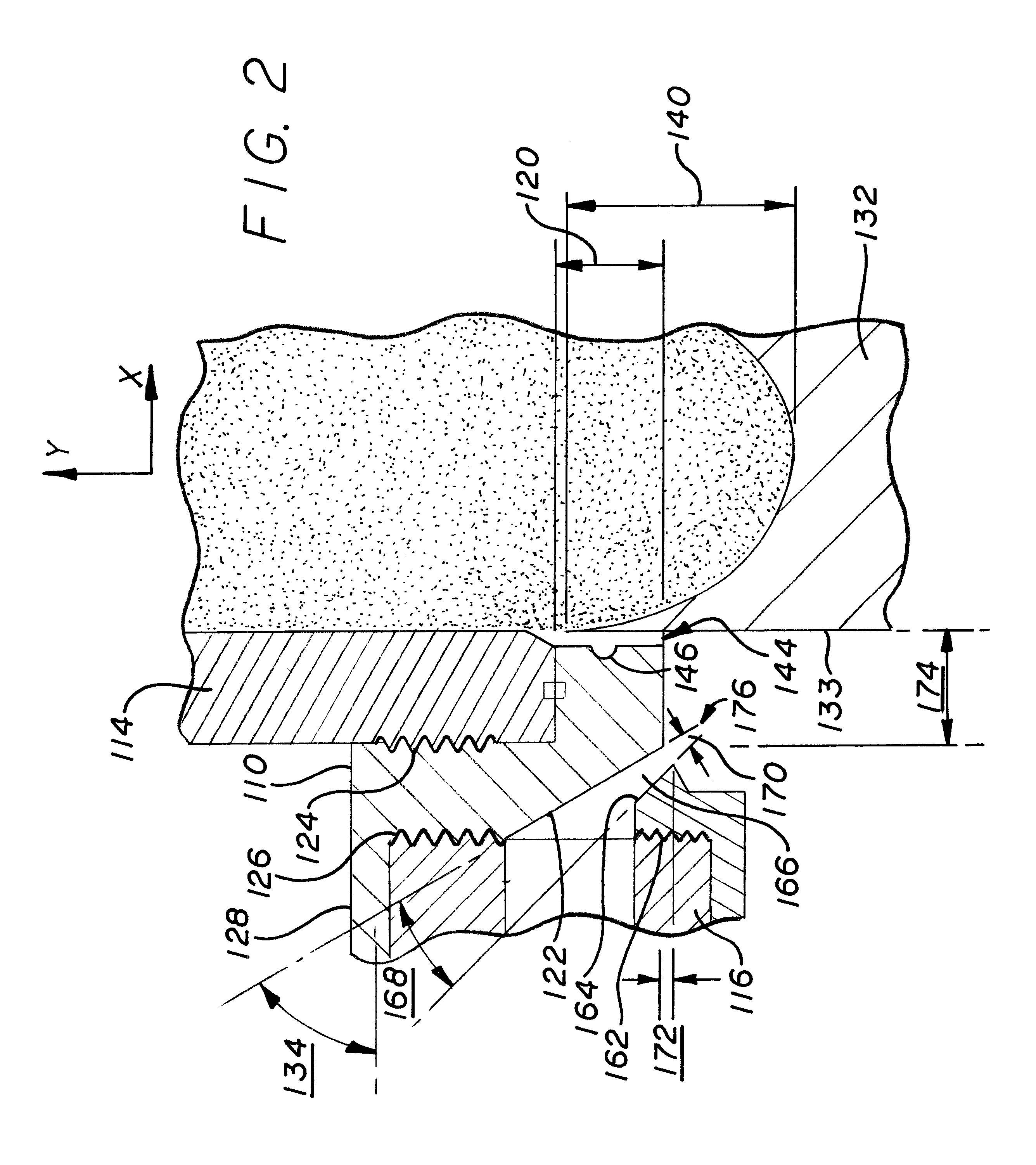Direct chill casting mold system
a technology of direct chilling and molds, applied in the field of metals, can solve the problems of not being able to quickly change the feed of materials, not being able to have molten materials, and not being able to achieve rapid change of material feed, etc., and no researcher has put together a dynamic model of heat transfer in direct chill casting without making certain assumptions and accepting many approximations
- Summary
- Abstract
- Description
- Claims
- Application Information
AI Technical Summary
Problems solved by technology
Method used
Image
Examples
example 1 observations
stings could be conducted without encountering any problem related to dimensional stability of the mold system. The mold system remained rigid and showed excellent resistance to thermal fatigue resulting from start and completion of the casting cycle. No leakage was observed in the molten metal, coolant media or lubrication line flow paths over repeated uses of the mold package. No steam was observed in the immediate vicinity of water impingement location on the billet and downstream of that point under the mold table or above the mold table. The surface of the billet was smooth and qualifying for the required industry standard set for direct extrusion application. The metallurgical structure of the billet exhibited 75 microns as grain size and around 42 microns as cell size (interdendritic spacing) at the center of the billet. The sub-surface liquation band varied in depth ranging from 0.015 to 0.060 inches with average close to 0.030 inches. The casting speeds that could be attain...
example 2
B. Example 2
Set Up: Conditions mentioned in example 1 were maintained except recycled water was used as cooling media. The recycled water typically had the following chemistry:
i) Total dissolved solids of 1,200 milligrams per liter (as compound to 250 milligrams for city water);
ii) Total suspended solids which generated about two pounds per square inch (psi) pressure difference across the in-line filter during the course of the casting (mesh opening 0.064 inches); and
iii) Total oil and grease content of 60 milligrams per liter.
example 2 observations
esult of using recycled water, no deleterious effect was observed on the functioning of the mold system. No change was required in the casting practice of the billets, the same thresholds of casting speeds could be maintained with recycled water as with direct city water. The metallurgical structure of the billet did not indicate any difference from that observed in example 1.
PUM
| Property | Measurement | Unit |
|---|---|---|
| angle | aaaaa | aaaaa |
| angle | aaaaa | aaaaa |
| angle | aaaaa | aaaaa |
Abstract
Description
Claims
Application Information
 Login to View More
Login to View More - R&D
- Intellectual Property
- Life Sciences
- Materials
- Tech Scout
- Unparalleled Data Quality
- Higher Quality Content
- 60% Fewer Hallucinations
Browse by: Latest US Patents, China's latest patents, Technical Efficacy Thesaurus, Application Domain, Technology Topic, Popular Technical Reports.
© 2025 PatSnap. All rights reserved.Legal|Privacy policy|Modern Slavery Act Transparency Statement|Sitemap|About US| Contact US: help@patsnap.com



